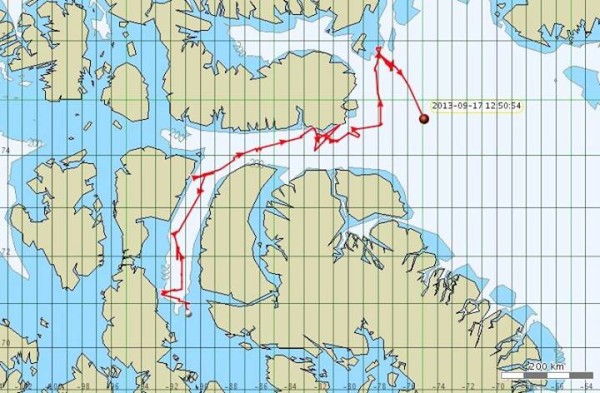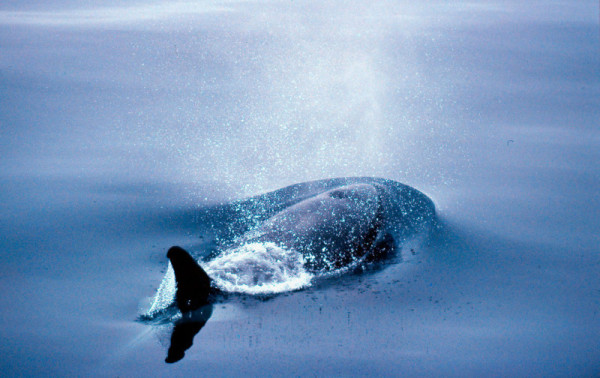Arctic Killer Whales Head South
Well, we are down to only one remaining tracker on the killer whale pod in the North East Canadian Arctic. The scientists still believe that the pod of 14-20 or so animals will be together, and this past few days there was an interesting – and rather surprising – turn northwards.
I’ve travelled in these areas by ship, and know that at the edge of the continental shelf, and in areas where the seabed is relatively rugged or sloping, there are quite often good conditions for increased marine productivity – circulating nutrients, which in turn give rise to relatively high concentrations of phytoplankton, and then zooplankton, fish, birds, seals, and then top predators like the killer whale!
The small island where the killer whales turned around is Cobourg Island, which is designated a National Wildlife Area due to its dense breeding colonies of seabirds like Thick-billed murres, black-legged kittiwakes, glaucous gull, northern fulmar and black guillemot. Within 100 km or so is relatively rich feeding grounds for these seabirds, once the sea ice breaks up in the spring. The area likely also draws large populations of quite a few species of Arctic seals and fish. I suspect the killer whale found prey here, then headed south as winter conditions are increasing now, and sub-zero nighttime temperatures are now common at this 77 degree North latitude.
The area the whales are swimming in now is commonly known as the North Water polynya, one of the circumarctic’s most important regions of persistent open water. Since this is one of the largest areas of consistently unfrozen water in the Arctic, it is used quite extensively throughout the year – allowing some over-wintering by whales, seals, and some seabirds, as well as good feeding conditions for polar bears.
It now looks like the tagged whale and its pod are moving south, towards warmer and more trafficked waters. We’ll continue to monitor them and share updates as long as the final tracker remains in place and intact, so we can see just how far this pod travels.



